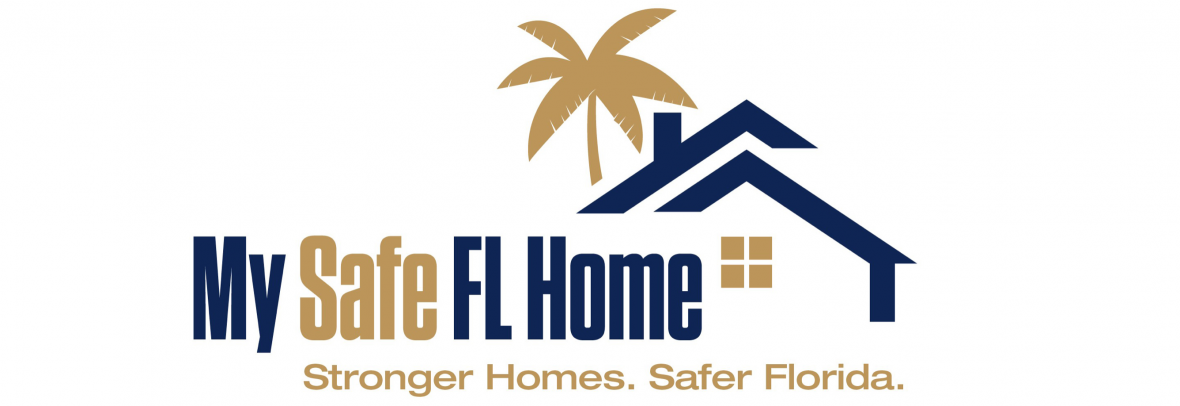Changes Ahead for My Safe Florida Home?

The popular program should resume taking applications on July 1, but it may be more difficult to secure the home hardening grants of up to $10,000.
FORT LAUDERDALE, Fla. – Looks like the free money party is over for many Florida households. The popular My Safe Florida Home program is expected to resume taking applications on July 1, but many homeowners might find it more difficult to secure grants of up to $10,000 for such improvements as hardening windows and doors and replacing roofs to improve water and uplift resistance.
Following a year of awarding nearly $400 million on a “first-come, first-serve” basis, this year’s version of the program will only allow low- and moderate-income households to apply for 60 days after July 1 if bills seeking $100 million in new funds are enacted before the legislative session ends next month.
That’s OK with Florida residents who say low- and moderate-income residents need help the most.
“This would also help ensure that in the event of the more and more destructive storms, their fortified home should end up less damaged,” said Barbara Zaretsky, a Sunrise resident who sought information about the program last year. “So many people live paycheck to paycheck and if they don’t have the resources to repair their homes, they can end up homeless, which would cause grave hardship.”
The $100 million budget is enough for 10,000 applicants to be approved for the maximum $10,000 grant.
A qualifying home is defined as a homesteaded property with a building permit for initial construction made before Jan. 1, 2008. Except for low-income applicants, the insured value of the home cannot exceed $700,000.
Unlike moderate- and higher-income applicants who must spend $1 for every $2 they get from the state (up to $10,000), low-income applicants will not have to provide any matching dollars.
But figuring out who qualifies under the low- and moderate-income definitions used by the program could be confusing.
As explained in the legislative bills, low-income households refer to those that earn 80% of the median income level for the state, metropolitan statistical area, or county — whichever is higher — where the house is located.
Moderate-income households qualify if they earn up to 120% of the median income level where the house is located.
Low or moderate income? It’s complicated
Devin Galetta, spokesman for the Florida Department of Financial Services, said the program plans to use a database developed by the federal Department of Housing and Urban Development for rental assistance and other programs to confirm whether households are low- or median- income.
But that database does not rely upon straightforward calculations. For example, HUD determined that a four-member household’s median income in the 2023 budget year is $88,500 in both Broward County and the Fort Lauderdale metro area. But its low-income limit for a four-member household is not 80% of $88,500, which would be $70,800. It is $76,800, because the calculation includes other cost-adjustment factors.
If the My Safe Florida Home program uses the latter figure, that would mean more households would qualify.
The bills that would authorize this year’s funding defines “moderate income” households as earning 120% of the median adjusted gross income of the state, metropolitan area, or county, whichever is higher.
In Broward County, a family of four would not be allowed to make more than $106,200 if the $88,500 median is multiplied by 120%. But HUD’s figure, which again uses other cost-adjustment factors for federal program eligibility, sets the limit at $115,200.
Also, qualifying household incomes will vary from county to county.
The state’s four-person median income is $85,500. It’s $74,700 in Miami-Dade County and $98,300 in Palm Beach County. For counties in the Orlando-Kissimmee-Sanford Metropolitan Statistical Area, it’s $85,700. The figure is below $60,000 in 11 rural counties.
With so many figures to check, low- and moderate-income homeowners will likely need help determining whether they qualify to apply during the first 60 days after the program resumes taking applications.
Galetta says homeowners will have to provide their household size and adjusted gross income from Line 22 of their Form 1040 IRS tax statement. Program officials, using the HUD data, will take it from there, he said.
Sen. Jim Boyd, the bill’s Senate sponsor, said by text message that he’s confident the Department of Financial Services will figure it out.
“I believe the program administrators are equipped to make the income qualifier determinations,” he said.
Low-income participation rates low so far
Technically, Florida statutes governing the program have always required the program to prioritize low-income applicants. But among the first 23,822 grants approved by the program during 2023, just 2,429 were low income even though participation cost nothing, according to a 2023 annual report released by the department.
Asked how the idea came about to prioritize low- and moderate-income applicants this year, Boyd said, “We wanted to make sure all our Florida friends and neighbors could take advantage of this program, especially those that might not have the (financial) resources to do this on their own.”
So far the reauthorization bills have been approved unanimously by five of the six Senate and House committees. If approved by the full chambers, a merged version would be forwarded to Gov. Ron DeSantis.
The first round of funding, in May 2022, authorized $115 million for grants. Another $100 million was added during last spring’s legislative session, followed by $176.2 million authorized during last November’s special legislative session. The final outlay addressed 17,617 homeowners who had submitted grants and were awaiting approval.
The program stopped accepting new grant applications in September as officials waited to see if more funding would be made available.
Initially, applicants with approved grant applications were given a year to get their improvements completed, pay their contractor, secure their revised insurance rate, and apply to the state for reimbursement.
But the program has reimbursed only 56% of applicants who were approved for grants back in January 2023, Galetta said. That prompted the program to begin offering six-month extensions, he said.
“We understand that with impact windows for example, many of the windows are on back order, and it is taking several weeks to get the windows delivered,” Galetta said. “The program is working to not penalize a homeowner for something beyond their control.”
Most say program helped insurance costs decline
Lawmakers tout the program as a way for Florida homeowners — beleaguered by multiple property insurance cost hikes in recent years — to save money by qualifying for insurance discounts required under state law for homeowners who harden their homes.
Of the first 4,785 homeowners who completed their improvements and received reimbursements, 2,375 saved an average $969 on their insurance premium, the annual report said.
An additional 1,184 saw no decrease “but avoided an increase” they would have been charged if they had not made the improvements, according to the report.
And 718 “did see an increase but at a lower rate” than homeowners who did not participate, the report said.
Program officials also boast that the program provides free hurricane-mitigation inspections that enable participants to learn how ready they are even if they don’t apply for a grant.
Through Friday, 98,343 inspections have been completed and 29,921 grants have been approved, according to data provided by the department.
Broward County tops the lists of inspections completed — 15,954, and grants approved — 6,016. Next in both categories were Palm Beach and Pinellas counties.
Low-income applicants will need help
Another change this year that could help boost participation by low- and moderate-income residents: The program will no longer require applicants to choose from a list of participating contractors.
Going forward, applicants may select any properly licensed contractor as long as they include the contractor’s name and state license number on their grant applications.
Nothing in state law prohibits enterprising contractors from soliciting qualifying homeowners and helping them with the application process, Boyd confirmed.
Providing resources to help low-income homeowners apply will be important if the state is serious about boosting their participation levels, said Terry Heagy, a Cocoa Beach homeowner who was among the earliest applicants in December 2022.
Heagy said a friend who qualified for low-income assistance last year ultimately received no benefits “in part because she struggled with the process, with internet access and in communicating with the program.”
He added, “Too often those low-income individuals have fewer resources to support their needs. What seems logical and efficient to a college graduate with years of computer training and experience navigating a bureaucracy is overwhelming to an 80-year-old homeowner on fixed income with limited or no access to internet.”
Check for details about the program’s next phase at mysafeflhome.com.
© 2024 South Florida Sun-Sentinel. Distributed by Tribune Content Agency, LLC.





